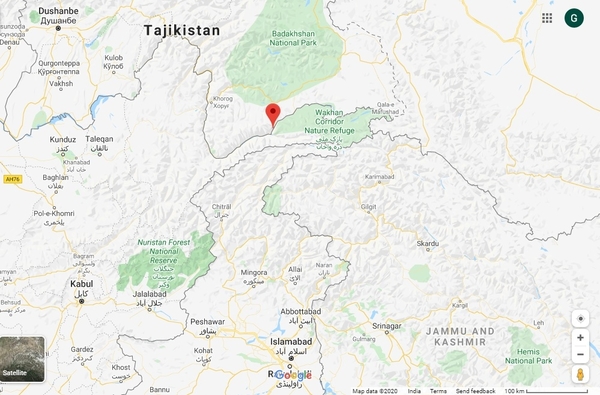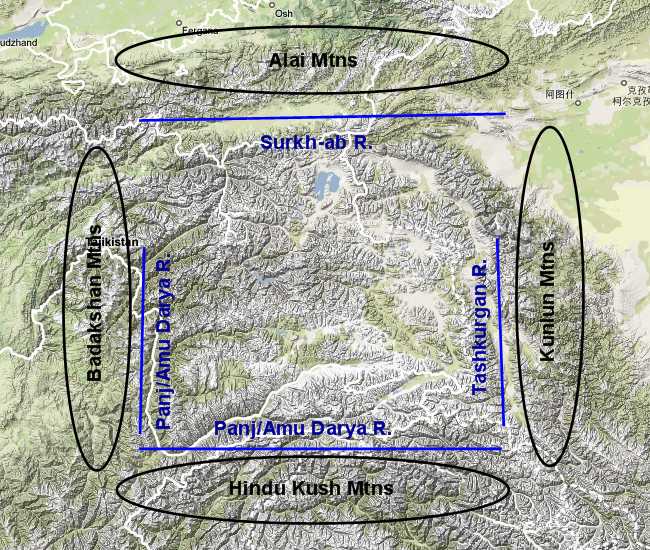
| MOUNT MERU / SUMERU AND RIG VED 3. Mount Meru / Sumeru and Rig Ved :
The Aryan Scriptures, Veds refer to the Mount Hara as Mount Meru or Sumeru (the Great Meru), and describe the Himalayas as stemming from Mount Meru which itself stands at the centre of the known world. The Vedas also refer to Arya Vart as Pradesh (Region). In the Vedas, Bharatvarsh, Ancient India, lay to the south of the Himalayas.
The Wikipedia article on Jambudvip, the environs in which Mount Meru stands, identifies Jambudvipa with the Pamir region. In the Vedas, each of the four sides of Meru are made of four different precious substances: the south of lapis-lazuli, the west of ruby, the north of gold and the east of silver (or crystal). The Pamir-Badakhshan region was noted for precisely these precious substances and home to the only known lapis mines in antiquity. Further, the lapis mines were in the south of the Pamir region.
Rig Ved :
Given that the Rig Ved is commonly thought to have been written in the Upper Indus region, we have yet one more reason to look at the area immediately to the north and north-west of the upper Indus Valley i.e. the Pamir-Badakhshan region as being a another candidate for the homeland of the ancient Aryans, the so-called Proto Indo-Iranians.
The language of the Rig Ved and the Old Avesta are so close that they are commonly thought to be dialects such as that spoken in two neighbouring provinces and that further, they emerged from a common language philologists call Proto Indo-Iranian, another name for the language of united ancient Aryans.
(Note: The name Jamshid is a later version of the name Yima-Srira or Yima-Khshaeta, meaning Yima the radiant, in the Vendidad. In the Avesta, Jamshid is called Yima son of Vivanghat, while in the Vedas, he is called Yama son of Vivasvant).
Pamir-Badakhshan (the marked red spot is Pamir-Badakhshan) • To know more Click here.
Pamir Boundaries :
Historic Badakhshan / Pamir Boundaries • To know more Click here. |

